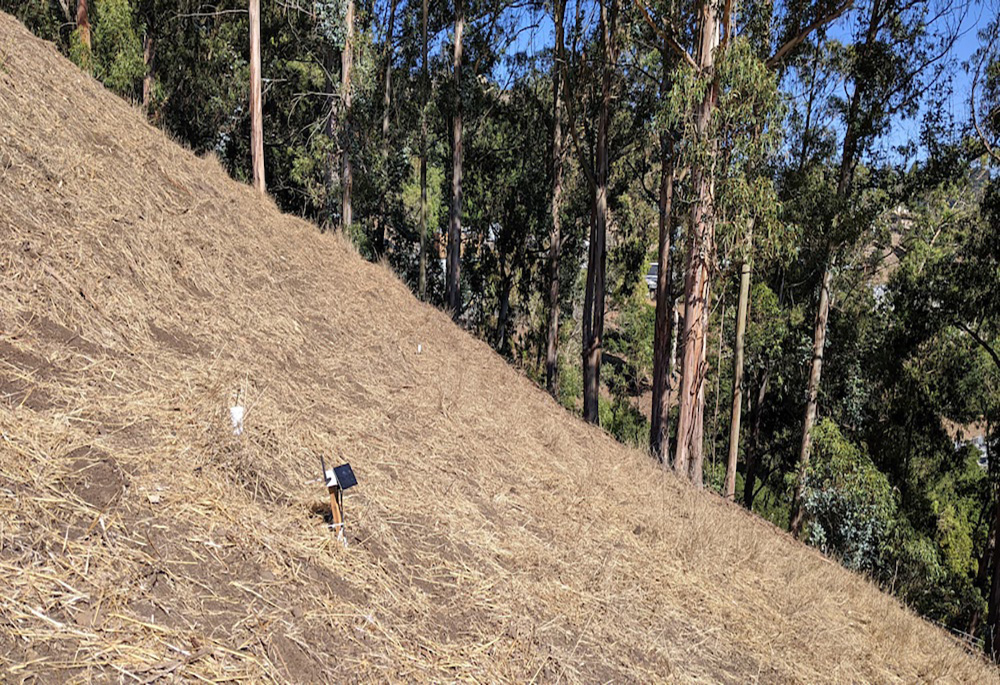Landslides are the downslope movements of soil or rock, and shallow slides which are typically less than 3m deep affecting just the soil can be plenty disruptive. EESA geophysicists are testing out using low-cost, low-profile sensors to monitor shallow landslide processes and learn which characteristics increase landslide hazard. What they find could equip land managers with the tools needed to map landslide hazards across space and time or ultimately to develop landslide early-warning methods.
EESA Scientists Sebastian Uhlemann, Stijn Wielandt, and Baptiste Dafflon and Postdoc Fellow Sylvain Fiolleau are using novel geophysical and remote-sensing techniques to estimate soil conditions such as soil cohesion and thickness, which dictate how much material can move downslope, as well as signs of ambient seismic noise, which are known to change their characteristics hours before a landslide occurs.
“The traditional approach to mapping landslide hazards is building ground models to depict Earth’s subsurface. These take considerable effort involving drilling, which can be complicated due to steep slopes and limited access, and analyzing soil samples, which is costly and slow,” said Uhlemann. “We have shown that we are able to characterize the subsurface with considerably less effort using geophysical and remote-sensing data to estimate critical parameters, such as soil cohesion, in different locations across our study site. To monitor the soil parameters that are important for landslide processes, we developed low-profile sensors that are easy to install and inexpensive.”
This work is similar to other efforts underway by EESA scientists who are using novel sensing tools and computer modeling to assess, for example, how climate change is impacting a vast Colorado River watershed or to speed up the time it takes to evaluate whether critical buildings are safe to occupy shortly after a major earthquake. In the case of the work led by Uhlemann, it’s possible to take the data obtained by the sensors and establish a landslide probability map estimating the degree of landslide hazard at different locations across a site, or to focus more narrowly on particular areas of concern. The team is also experimenting with using machine learning to predict future changes in soil properties that could potentially alter the degree of landslide hazard and allow them to assess risk hours to days ahead of time. This will then enable early warning of potentially hazardous conditions.
Between 2004 and 2016, 4,862 nonseismic fatal landslide events were recorded in the Global Fatal Landslide Database–12% of these events directly impacted infrastructure. Research into improving efforts to quantify landslide hazard and risk are needed as the number and intensity of these events continue to rise. This work is supported by Berkeley Lab’s Laboratory Directed Research and Development Program.
A recent paper, “Low-Power, Flexible Sensor Arrays with Solderless Board-to-Board Connectors for Monitoring Soil Deformation and Temperature,” was published this spring in the journal Sensors and describes the team’s work.


